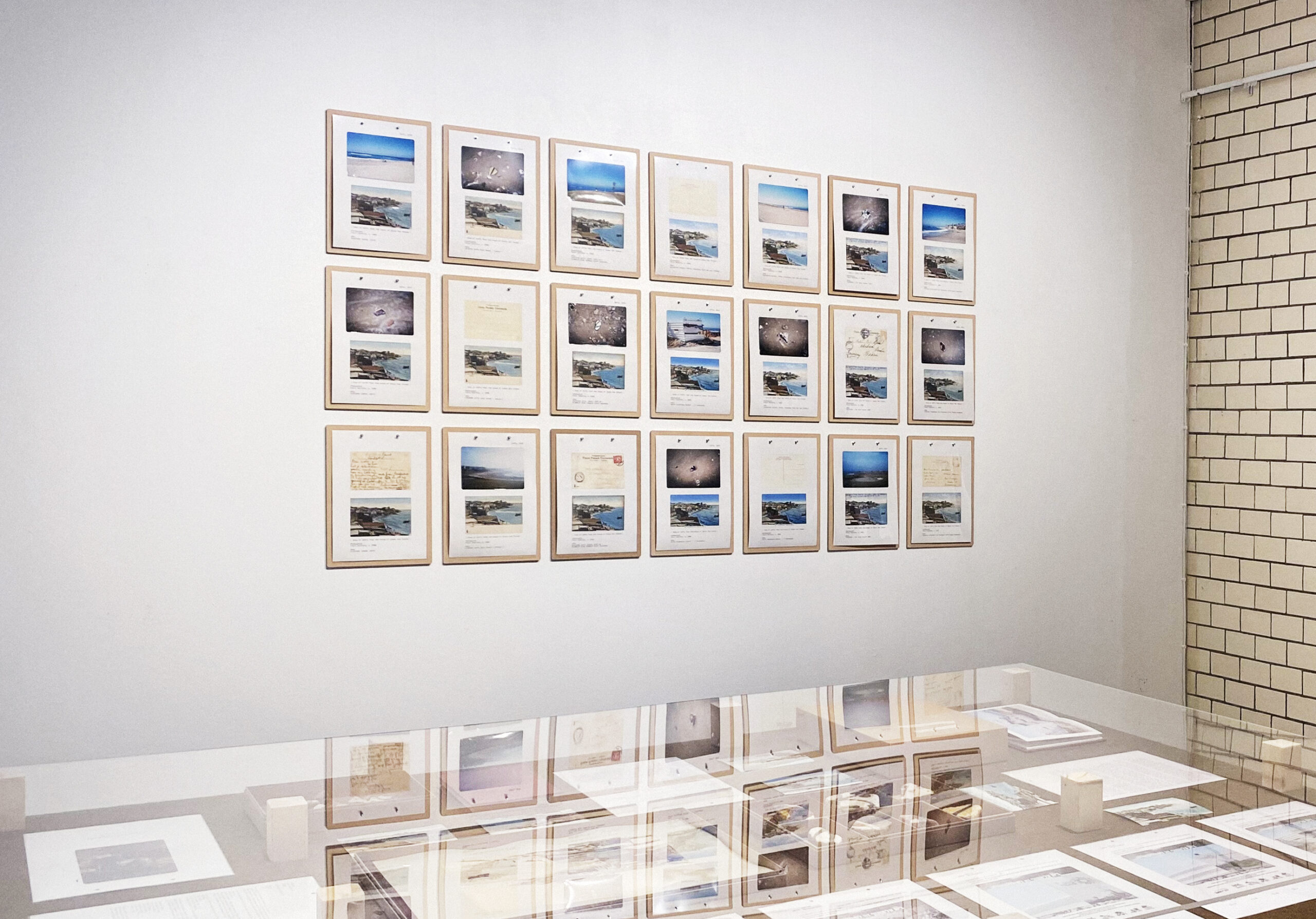
Victory over the Victory, Köttinspektionen, Uppsala, Sweden, 2024 (April 6 – April 21)
Any artistic group statement about the war inherently acknowledges its incompleteness. Moreover, there’s a risk of it becoming overly representative, reducing culture and art to commodities. Similarly, any curatorial public statement is inherently political, particularly in the context of an ongoing war, making it especially vulnerable to politicization. Whether or not to discuss the war is a decision every institution faces. However, once the choice is made, it’s important to convey our internal logic and trust in the viewer’s loyalty and acceptance. Köttinspektionen has a strong tradition of hosting exhibitions with significant political engagement and a keen sensitivity to current challenges. Therefore, we considered it pertinent to invite artists whose artistic practice revolves around questions of war, loss, sorrow and memory.
Victory over the Victory commenced with extensive and purposeful discussions between situated voices of artists, art practitioners who are directly involved in current anti-war efforts, impacted by the consequences of militarism and the belligerent ideologies of their own or other nation-states, or actively engaged in reflecting on historical and contemporary events. A given socio-historical moment is never homogeneous; on the contrary, it is rich in contradictions. Within the framework of this exhibition, various genealogies with clear positions are collected and juxtaposed. The exhibition is an attempt to highlight the personal affective dimensions of collective history. But what happens when we give a voice to one and deprive another of it?
A voice is always somebody’s voice, and our voices don’t fully represent our identities, which carry traces of the other. Whether it’s the smooth voice of state propaganda, the emotional speech of a leader advocating peace and freedom while justifying notable wars and destruction, the credible voice of a victim, the quiet voice of an observant witness, the silently present voice of the voiceless, or echoing voice of the absent ones?
The artists featured in the exhibition bring voices from different countries and generations. Their works span across time and space, from the aftermath of WWI and WWII to the repercussions of armed conflicts following the dissolution of the former Eastern bloc, and extend to the ongoing colonial wars in Afghanistan, Ukraine, and the Middle East.
The viewer is met by the voice of the sound installation by Mkrtich Tonnoyan who calls out the long-forgotten names of Canadian soldiers in the almost 14-hour commemoration ritual, reviving the memory of those absent and questioning the value of countries’ international missions in relation to human life.
This voice leaks further to the big room connecting with works that testify to the traces left by the war. Pavel Rotts explores the city’s psychogeography and creates a map depicting the damage inflicted upon buildings in Helsinki. By transforming these scars into climbing boulders, he reveals a negative space—a void that paradoxically becomes a vessel for memory. Anastasia Yarovenko cuts out from fine paper patterns of tank tracks that appeared when Russia invaded her native Ukraine; the traces of the war hang in the air and end up on the floor. The traces of war hang in the air and end up on the floor, transferring recognizable signs and visual elements of war into abstractions, thereby questioning the role of the image in communication. Ingela Johansson studies the memory and healing that unites postwar generations with history of antifascist-resettlement cooperatives from Bohemia, while the Armenian collective AHA seeks to preserve in physical imprints the memories of their people’s cultural heritage that may be lost to future generations. Above everything else, Joakim Forsgren exhibits his grandmother’s burial cover cloth, which would naturally belong in the church, turning the exhibition room into a sacred place.
Anri Sala’s film takes us to Sarajevo to follow a story of a musician bravely navigating through the sieged city to join orchestra rehearsals. At every crossing watched by snipers she stops, looks and listens. Should she wait or should she run? Should she wait for the others or take the risk on her own? Aftermath of other Yugoslavian conflicts find their continuation in intimate self portraits of Snežana Vučetić Bohm. In the same room, other war documents are displayed. Ukrainian artist Arthur Bondar has shown original photo collages from an official censored Soviet propagandistic military newspaper – The Red Star justapoxed with images taken by German soldiers while passing through Sandinavia. Another time-based and archival approach is seen in work of Klara Källström & Thobias Fäldt and Johannes Wahlström, who have been analyzing and revisiting the hidden and yet omnipresent complexities of the conflict between Palestine and Israel the last 3 decades.
The works of Matilda Frykberg, Juan-Pedro Fabra Guemberena and Zhanna Kadyrarova take us back to today’s war in Ukraine. A radio streaming a popular music mixed with political speeches, an omnipresent Russian rocket pursues the visitor from room to room.
Soundscapes of Kabul recorded by Aziz Hazara after the American troops left the country loop the exhibition voice with the names of soldiers, thus reflecting on decades of conflicts that Afghanistan has endured and the stereotyped narratives resulting from it.
The intertwining of war and politics remains a defining feature of our contemporary world, where preventive warfare is increasingly recognized and justified on an international scale. As the grand strategy of peace shifts with each administration the military emerges as an even larger social class in countries like the US, Russia or China, yet, reviving the ideas that war is ultimately a continuation of politics by other means. While the pacifistic poster of Carl Johan De Geer suggests an uncompromising strategy, the bellicose mindset perpetuates organized large-scale violence, challenging our aspirations for peace as the elusive norm. As we reflect on these realities, we must question whether we have become desensitized to the inevitability of militarization, and dare to imagine a world where the call to war goes unheeded, where peace becomes not just an unattainable ideal, but a tangible reality.
Opening ceremony 14
Wed-Fri 13-18
Sat-Sun 12-4pm